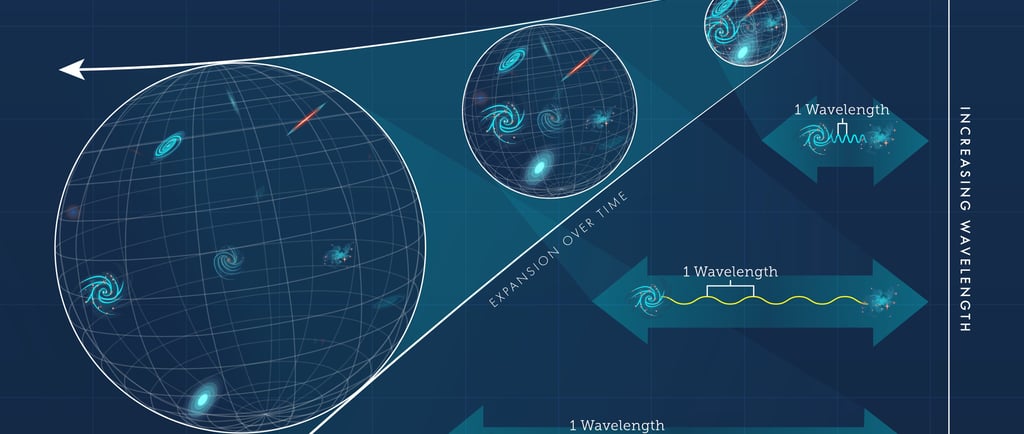Redshift: The Astronomical Phenomenon of Light from Distant Galaxies


The Basics of Cosmological Redshift
In the vast expanse of the universe, light from distant galaxies offers a window into the cosmos' history and dynamics. As the universe expands, light emitted from these galaxies travels immense distances to reach us. This journey is not without consequences, leading to a phenomenon known as cosmological redshift. This article delves into the mechanics behind redshift, its implications for our understanding of the universe, and how it has shaped modern cosmology.
What Causes Redshift?
As light propagates through the expanding universe, it experiences a stretching effect. This can be understood through the principles of wave mechanics; as the space through which the light moves expands, so does the wavelength of the light itself. This stretching of wavelengths results in light shifting towards longer wavelengths, predominantly in the red spectrum. Thus, when we observe light from distant galaxies, we find it to be redshifted. This effect signifies not merely a change in color but also serves as vital evidence supporting the theory of an expanding universe, as articulated through the work of Edwin Hubble and others.
The Significance of Redshift in Cosmology
Redshift plays a crucial role in our comprehension of the universe's composition and evolution. By measuring the degree of redshift in the light from galaxies, astronomers can ascertain their distance from Earth and the rate of the universe's expansion. This relationship forms Hubble's Law, which posits that more distant galaxies move away from us faster than closer ones, implying a dynamic, ever-expanding universe.
Moreover, the redshift can reveal the universe's age. By analyzing the redshifts of light emitted from early galaxies, scientists can infer when these celestial bodies formed and how they have evolved over cosmic time. This understanding enhances our knowledge of the cosmos, allowing us to piece together the story of our universe's birth and growth.
In sum, as light from galaxies traverses the depths of space, it undergoes significant transformations, stretching into increasingly longer and redder wavelengths due to the ever-expanding vastness of the universe. The phenomenon of cosmological redshift is not merely an intriguing aspect of light; it is an emblematic signature of the universe's dynamic nature. Understanding redshift provides insight not only into fundamental questions about the universe's expansion but also into the trajectory of cosmic history itself.
